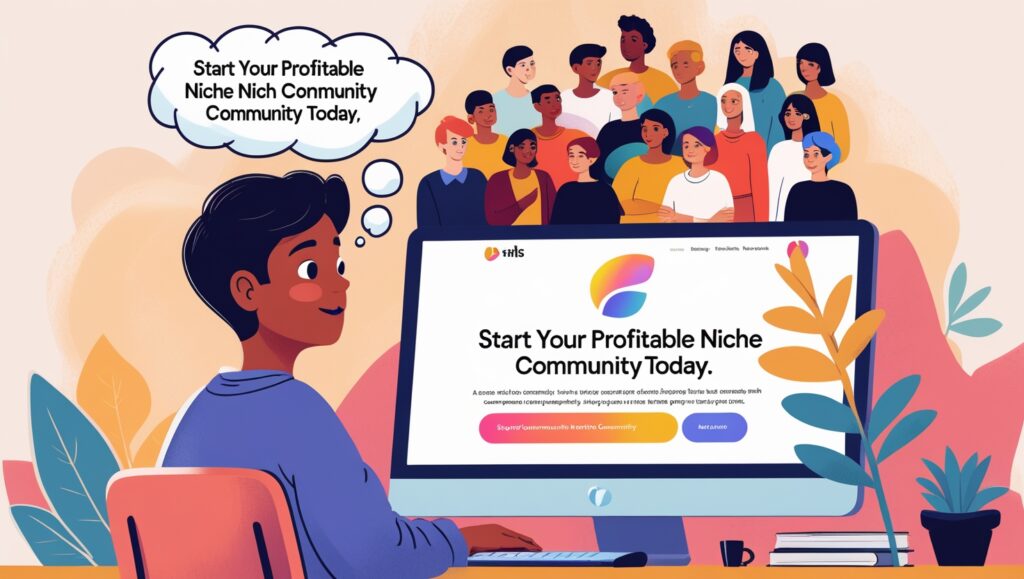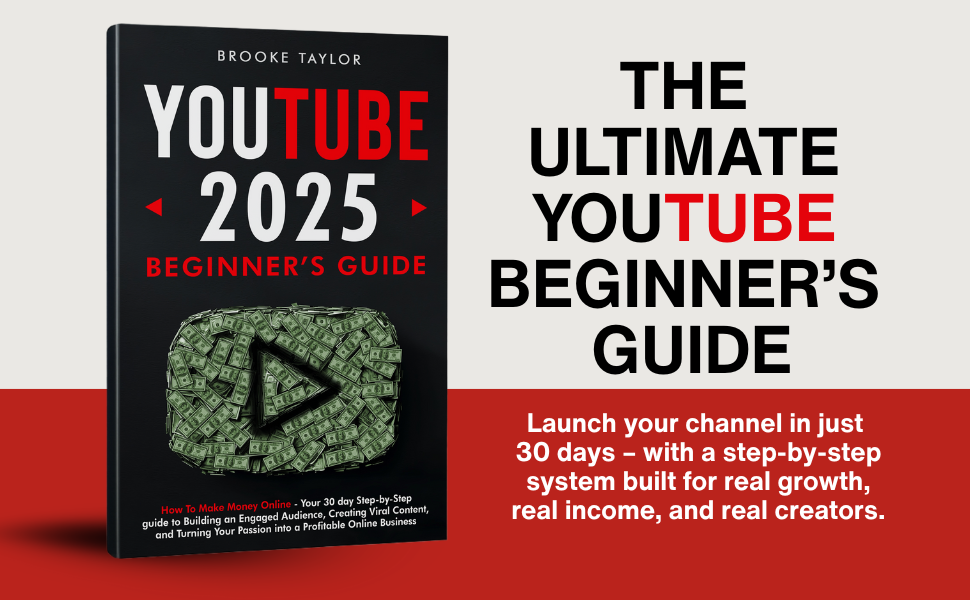How to Start a Niche Community That Pays You Monthly
When I first started thinking about building a niche community, I had no idea it could become a steady monthly income stream. I thought communities were just places to share ideas or network — not something that could actually bring in predictable revenue month after month.
But once I found the right platform and structure, everything changed. Today, my community brings in income consistently without needing to launch constantly, run paid ads, or hustle daily on social media. Here’s exactly how I did it — and how you can start your own niche community that pays you monthly too.

Table of Contents
Why Niche Communities Work Better Than Broad Ones
When I tried going broad in the beginning, my content didn’t really connect with anyone. It was too general. But once I got specific — and focused on a niche I personally knew and cared about — everything clicked.
Niche communities work because people are looking for spaces where they feel understood. The more specific the problem you solve or the identity you speak to, the easier it is to build trust and convert strangers into paying members.
Instead of building a community for “entrepreneurs,” I could have built one for “Christian women launching service businesses from home.” Or instead of “fitness,” maybe “busy dads who want to get strong with 20-minute workouts.” That kind of clarity drives conversions.
The Platform I Use for My Paid Community
After testing several platforms (Facebook Groups, Discord, Patreon, even WordPress plugins), I landed on Skool — and it made everything 10x simpler.
Skool combines the community, classroom, and event calendar in one clean interface. It’s designed to keep your members engaged and makes it easy for you to charge for access. I didn’t need extra software, complicated funnels, or tech help. I just set it up and started inviting people.
If you want to start your own Skool group, here’s my link to try it out:
https://www.skool.com/signup?ref=1ec568c8b52c4003bec6f83bc60e710c
How I Chose My Community Topic
I focused on three simple questions:
- What do I know well?
- What am I passionate about?
- What would people actually pay for?
When I looked at the overlap, I realized I had real insights to share in my niche — and others needed the help. That gave me confidence to start charging for access and guidance.
How I Launched Without a Big Audience
Here’s the truth: I didn’t have a huge following. I started with a list of 50 people and some DMs to friends and followers who had asked me for advice before.
I offered a beta version of the community at a low price, gave a clear promise, and over-delivered on value. That early feedback shaped the group into what it is now. And from there, word spread.
How I Keep Members Engaged Every Month
Skool makes this easy with its gamified leaderboard, community feed, and built-in course content. But what keeps people subscribed is consistency and real connection.
Every week, I post prompts, answer questions, share behind-the-scenes updates, and run live sessions. It’s not about being perfect — it’s about showing up and creating a space people don’t want to leave.
Pricing and Earning Monthly Income
I started with $29/month for my group, and then raised the price once I had testimonials and momentum. Even with just 50 members, that’s $1,450/month — and it grows as word spreads.
What’s powerful is that this income is recurring. I don’t need to sell something new every week. My job is to serve the community — and that keeps the income steady.
How I Handle Tech and Payments
Skool handles everything. I connect Stripe once, set the price, and Skool takes care of access, renewals, and community management. I don’t deal with failed payments or login issues. It just works.
And that peace of mind lets me focus on what I do best — helping people inside the group.
How to Structure Your Niche Community
Here’s what worked for me:
- A simple course that solves one key problem
- A weekly post or live session to build momentum
- A welcome message and intro post to build culture
- A private channel for wins, feedback, and direct help
You don’t need a massive content library — just a clear result and a consistent rhythm.
The Affiliate Side Bonus
Another reason I love Skool? It has an affiliate program, and I earn extra every month just by recommending what I already use.
If you want to explore it yourself, you can sign up here:
https://www.skool.com/signup?ref=1ec568c8b52c4003bec6f83bc60e710c
You can build your own niche community and refer others to earn as well — it’s a win-win.
Final Thoughts
If you’re tired of chasing clients or selling low-ticket products that don’t scale, building a niche community that pays you monthly might be the smartest move you can make this year.
You don’t need a giant audience. You just need the right platform, a clear message, and a plan to serve people consistently.
That’s how I did it — and if I can do it, so can you.
One thing that really surprised me was how quickly people were willing to pay for something niche-specific. When I launched my community, I didn’t have a massive content vault or a big brand. I just had a clear promise and a space where people felt seen — and that made all the difference.
What helped the most was offering a clear value proposition. Instead of saying “join my group,” I told them exactly what they’d get: specific outcomes, access to someone who’s been there (me), and a community of people on the same journey. That clarity converts.
I also started offering exclusive content only available to members. It didn’t need to be fancy — simple resources, short videos, or private Q&As that people couldn’t get elsewhere. That extra value helped people justify paying month after month.
One thing I learned quickly: if you want people to stay, don’t just teach — build real community. I highlight members, ask for feedback, share behind-the-scenes lessons, and genuinely show up. That builds loyalty and connection.
The most important part of this model is that it scales without chaos. Whether you have 10 members or 100, the system doesn’t get more complicated. Skool handles the tech, so you can focus on delivering value.
Eventually, the word-of-mouth effect kicks in. Happy members invite others, tag your group online, or message their friends. That’s when you know your community has real staying power.
I also recommend offering a 7-day free trial if you’re using Skool. It removes all the friction for people to check it out. I’ve had dozens of members sign up during the trial and stick around long-term because they experienced the value firsthand.
When my group started growing, I added small bonuses for new members — simple things like templates, private trainings, or discounts to other offers I had. That boosted conversions and gave new members something special to start with.
Another benefit of using Skool is that everything is all-in-one. I don’t need a separate Facebook group, course platform, and Zoom calendar. It’s all right there — clean, distraction-free, and built to help communities thrive.
One of the best decisions I made was launching before I felt 100% ready. If I had waited for the perfect curriculum, perfect welcome video, or perfect logo… I’d still be sitting on the idea. Action creates clarity. Launch, then optimize.
The simplicity of the platform also means I don’t waste hours on tech. No need for automations, integrations, or funnel stress. Skool handles access, payments, emails, content hosting — and I just show up and serve.
If you’re serious about building a recurring income stream, I highly recommend you start your own Skool community. You can try it here using my link and get started today:
https://www.skool.com/signup?ref=1ec568c8b52c4003bec6f83bc60e710c






